Catch the snow at these spots in the San Gabriel Mountains — while supplies last
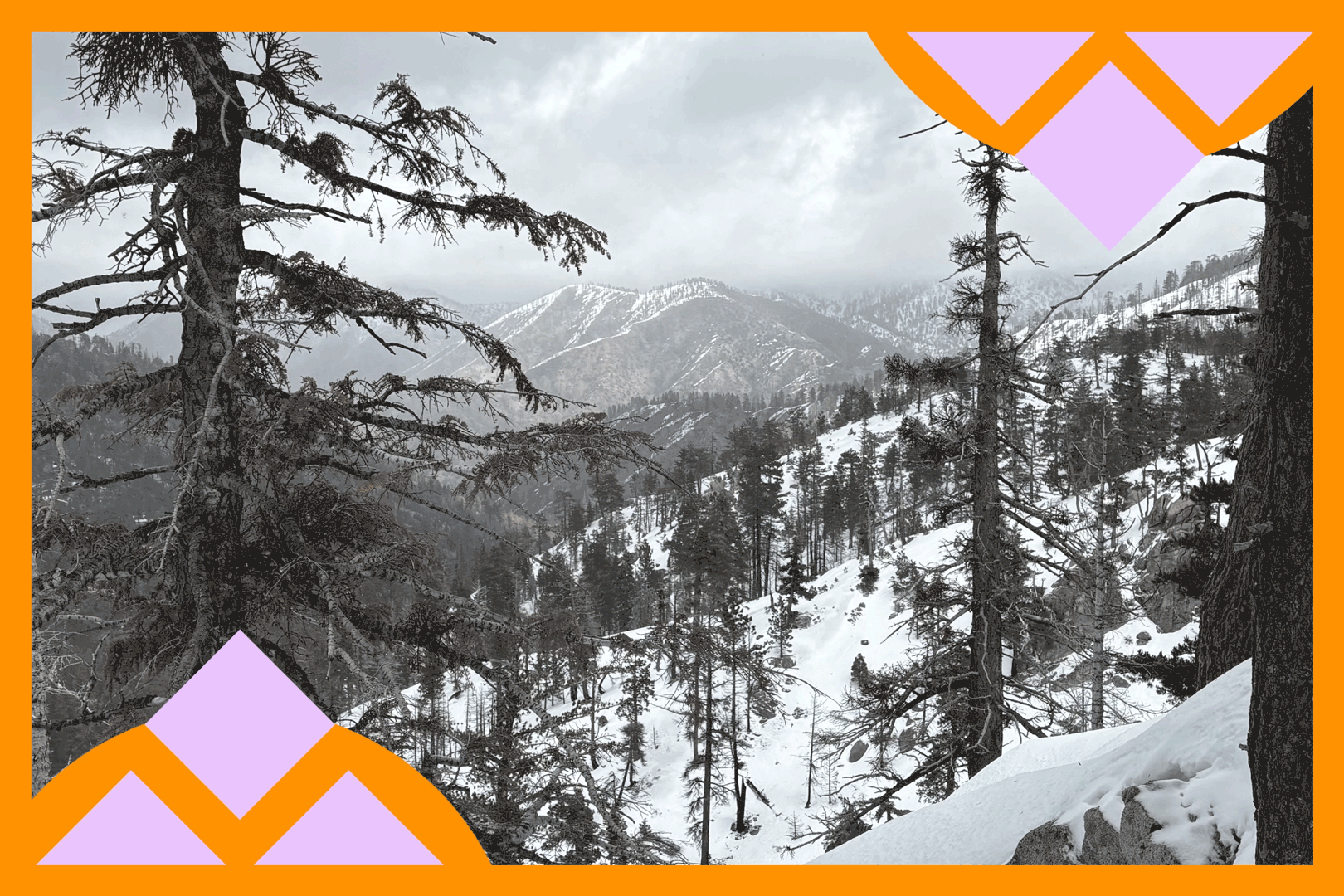
- Share via
Since moving to Los Angeles in 2018, I’ve kept up an important annual tradition: getting my feet into snow. Fortunately, I’ve never had to travel far to do it. When winter and early spring rains come to the Southland, the San Gabriel Mountains above L.A. get plastered with powder (cue incredible vistas). They say in Los Angeles that you can catch some waves at the beach in the morning and then hit the ski slopes in the afternoon. Unlike many things people say about our city, this one is actually true — and absolutely worth doing.
You are reading The Wild newsletter
Sign up to get expert tips on the best of Southern California's beaches, trails, parks, deserts, forests and mountains in your inbox every Thursday
You may occasionally receive promotional content from the Los Angeles Times.
I recently made my winter pilgrimage to the San Gabriels, and it was a classic sun and snow experience. I woke up to a mild and sunny L.A. spring morning, took my dog for a walk and then packed up my snowshoes, snow pants and backpack. After a quick stop for breakfast at Bub and Grandma’s in Glassell Park and an hour or so of driving up Angeles Crest Highway, I found the snow.
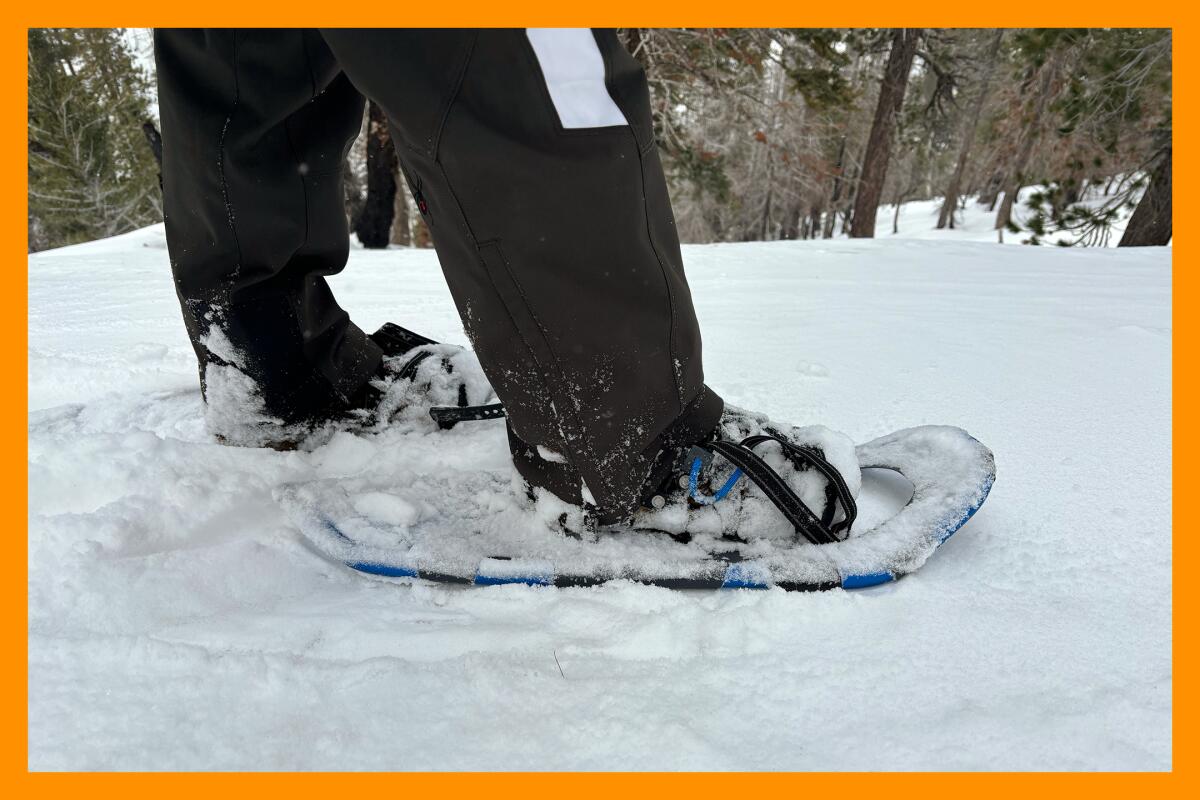
It emerged gradually, first in small patches along the road and then in glimpses of white peaks catching the morning light. When I pulled off the pavement near Waterman Mountain, I was in a different world. All around me, the slopes were blanketed in snow. Thick gray clouds scudded overhead, dumping flakes and dusting everything with a fresh coat of powder. Breaks in the clouds created roving patches of sunlight that lit up the frosty ground and cast long shadows from the towering pine trees.
I pulled on my gear — in addition to snowshoes, snow pants and a backpack with water and snacks, I always pack boots, gloves, a warm hat and an insulated jacket — and headed out on the Waterman Mountain trail, one of my favorite routes for wintertime exploring. Although I’ve hiked and snowshoed here several times before, it’s always interesting to see how winter transforms the landscape. The trail was barely visible under the snow (good thing I had a map on my fully charged phone), and I passed several creeks roaring with snowmelt. When I’m snowshoeing, I don’t have any goal in mind — instead of aiming for a summit, I slow down and take my time. I try to soak in my surroundings, knowing that in a month or so this snowy scene will likely be gone.
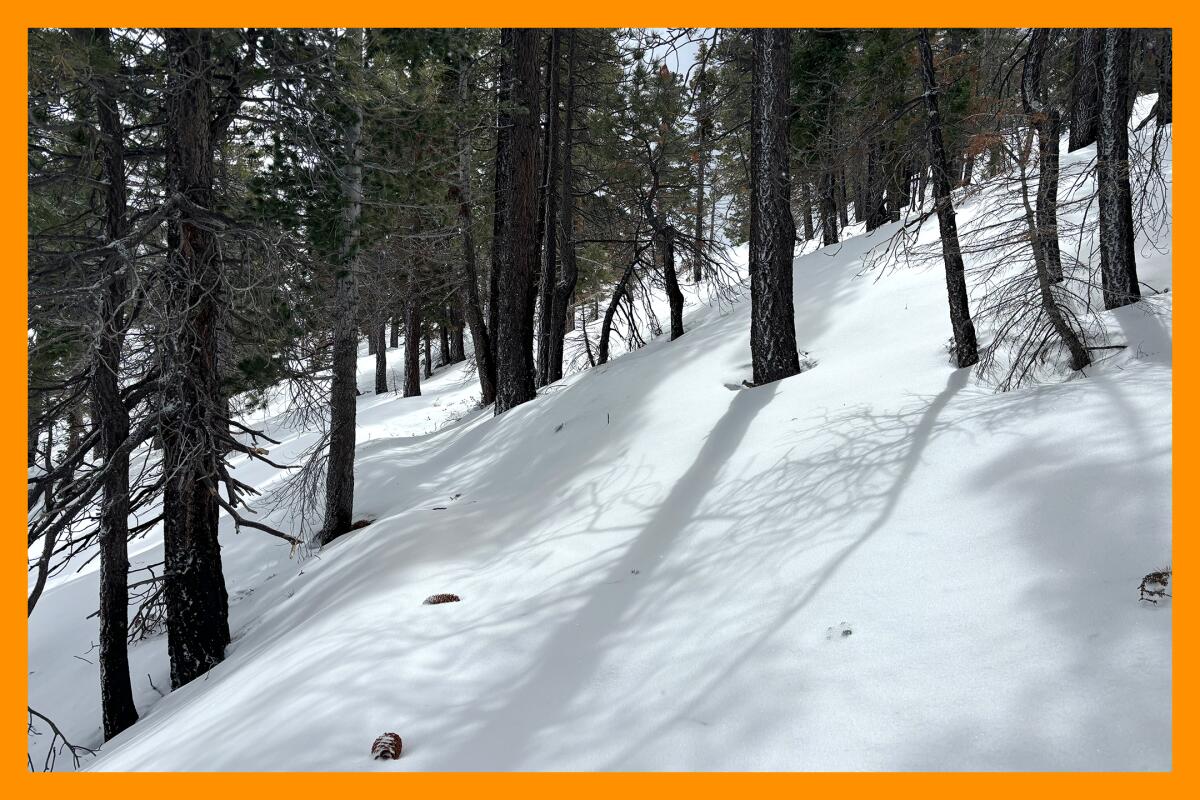
Although we’re now officially into spring, there’s still time to get your wintertime fix in the San Gabriels. If you go, check the weather first, as conditions in the mountains are very different from what’s happening in the city. Fill up your car’s gas tank, and be aware that Angeles Crest Highway is partly closed, so you’ll need to detour around the closure to get to higher elevations.
When I ventured into the mountains in mid-March, the snow coverage started around 7,000 feet. For the latest info, the National Operational Hydrologic Remote Sensing Center has a great interactive map that shows the snow depth in the San Gabriels.
I began my snowshoe trip at the Waterman trailhead, though you can also drive farther on Angeles Crest Highway and park at the Kratka Ridge parking area or at Islip Saddle (the road is closed past that). Bring an Adventure Pass; it’s required to park at Waterman and Islip Saddle.
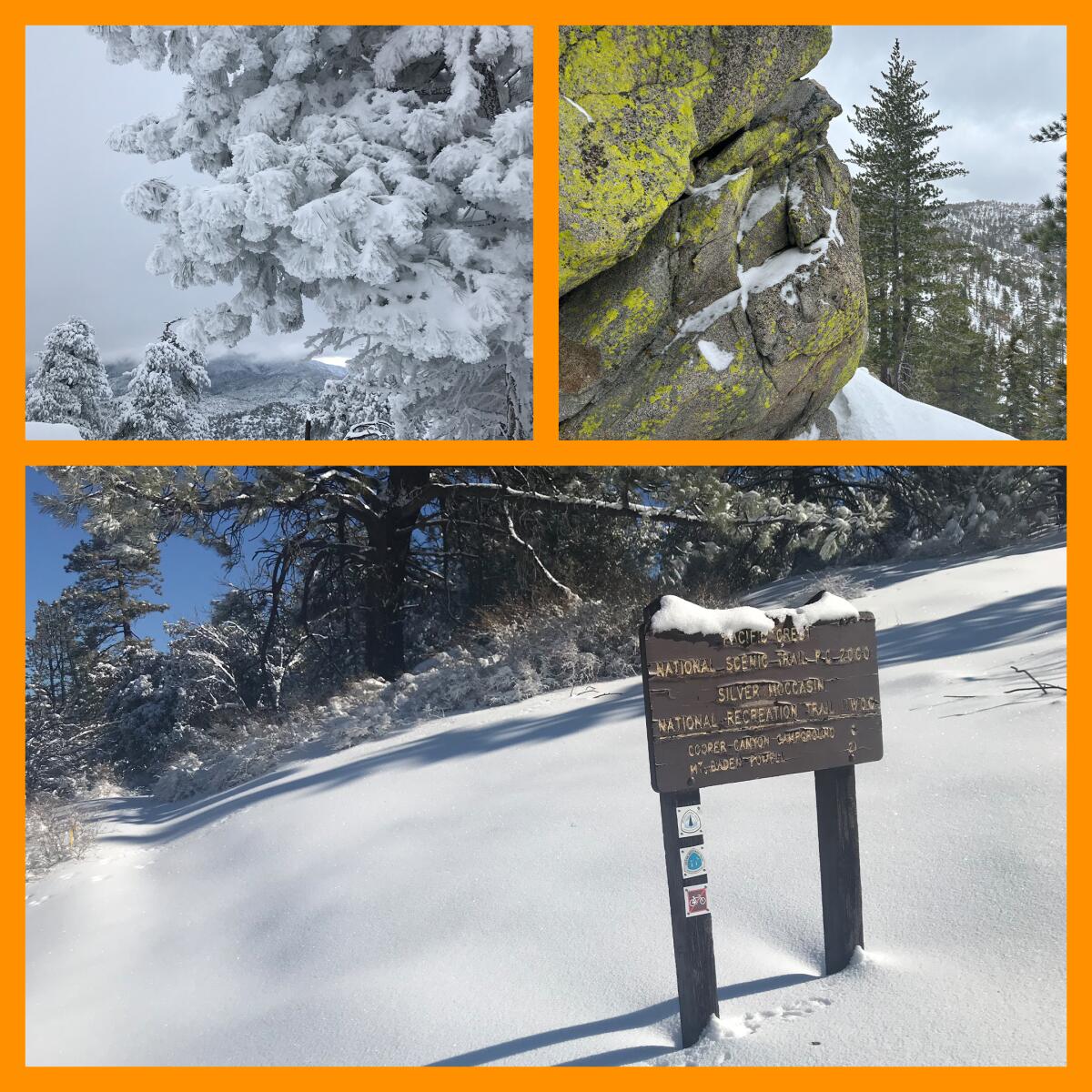
Prefer to ski or snowboard? You’re in luck. The Mt. Waterman ski area opened this month (call 818-790-2002 to check if they’re running before visiting) and Mt. Baldy and Mountain High are also reliable destinations for skiing in the San Gabriels. Make sure to check their websites before heading up, as their operating hours can change depending on the weather.

3 things to do
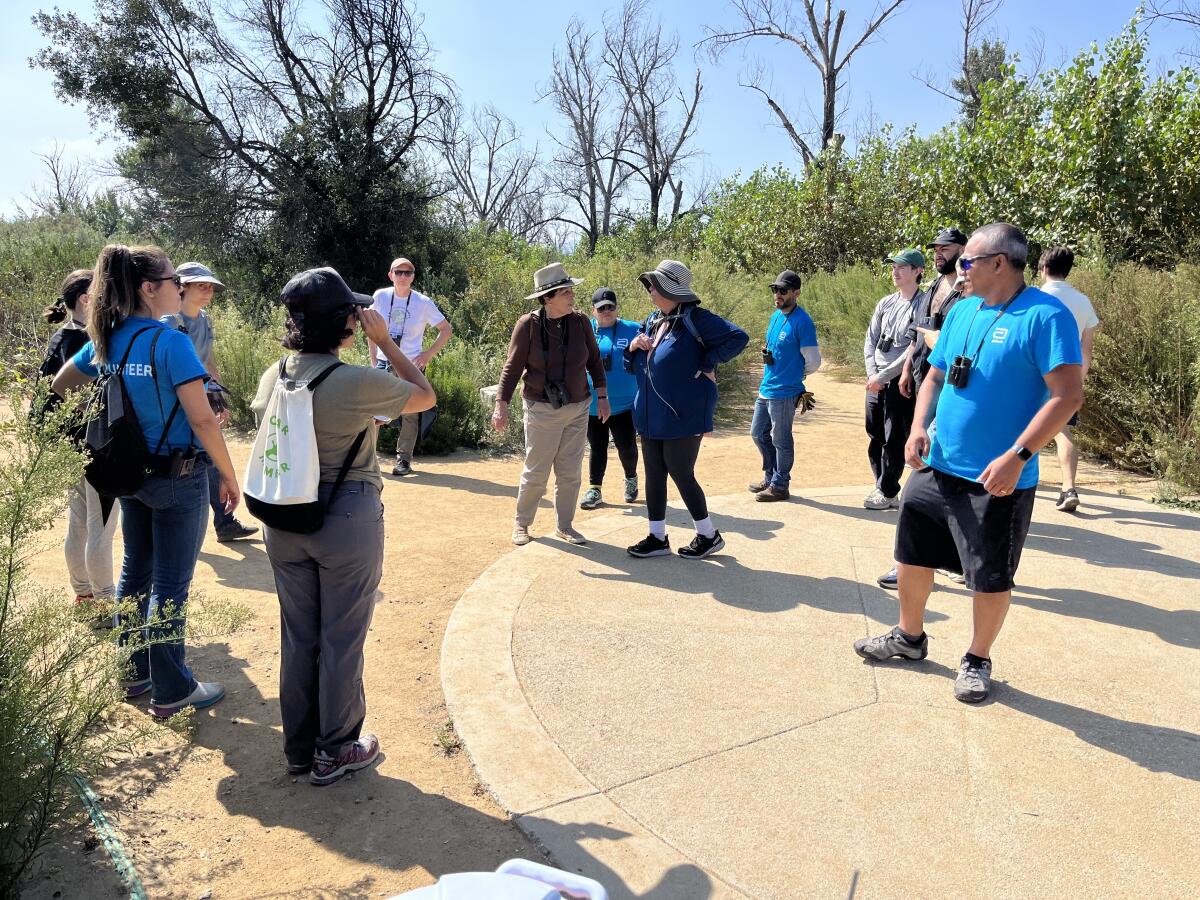
1. Learn the secrets of our local ecosystem in Van Nuys
Friends of the L.A. River will guide you through the winding paths and hidden groves of the Sepulveda Basin Wildlife Reserve, a flood control basin that’s teeming with local wildlife and plants. As you wander through the trails on the 1½-hour walk, an educator will recount interesting stories behind each creature and plant that crosses your path. Occasionally, they’ll also pause to lead mindfulness practices along the way. Attendees should bring a water bottle, insect repellent and attire that takes into account the rainy weekend forecast. Check-in begins at 9 a.m. Friday. The event is free, but you’ll have to reserve a spot, and take note of the event’s detailed navigation tips at eventbrite.com.
2. Meditate among plants in Santa Monica
Get centered among the lush greenery of Merrihew’s Sunset Gardens, a nursery full of California natives and many other beautiful plants that’s been part of the Westside community for more than 75 years. Yoga teacher and plant lover Jess Mack will be leading a one-hour meditation that weaves in “plant facts and revelations.” The event starts 9 a.m. Satuday. Tickets are $15 each, and you can buy them at eventbrite.com.
3. Gaze at the partial solar eclipse in Thousand Oaks
For those of us who haven’t booked a weekend in Mexico at a beachfront resort to witness the total solar eclipse, there’s still an opportunity to celebrate the rare phenomenon here in California. Irene Shabazi Rowland — a former elementary school teacher who practices nature-informed acupuncture and forest therapy — will be hosting a wellness walk at Wildwood Regional Park during the approximate two-hour window in which the moon passes between the Earth and the sun and casts a shadow onto the big blue marble we call home. Though Southern California won’t be in the so-called path of totality, you’ll still be able to see a partial eclipse. Rowland will lead you on a two-mile hike with the goal of relaxing, recharging and connecting with nature, and end the outing with a tea ceremony. Attendees are encouraged to bring their own sun protection gear, including a hat, sunscreen and those dorky eclipse glasses — as well as a lawn chair to maximize comfort. The event is free and kicks off in the Wildwood Park parking lot at 10 a.m. April 8. You can sign up at eventbrite.com.

The must-read
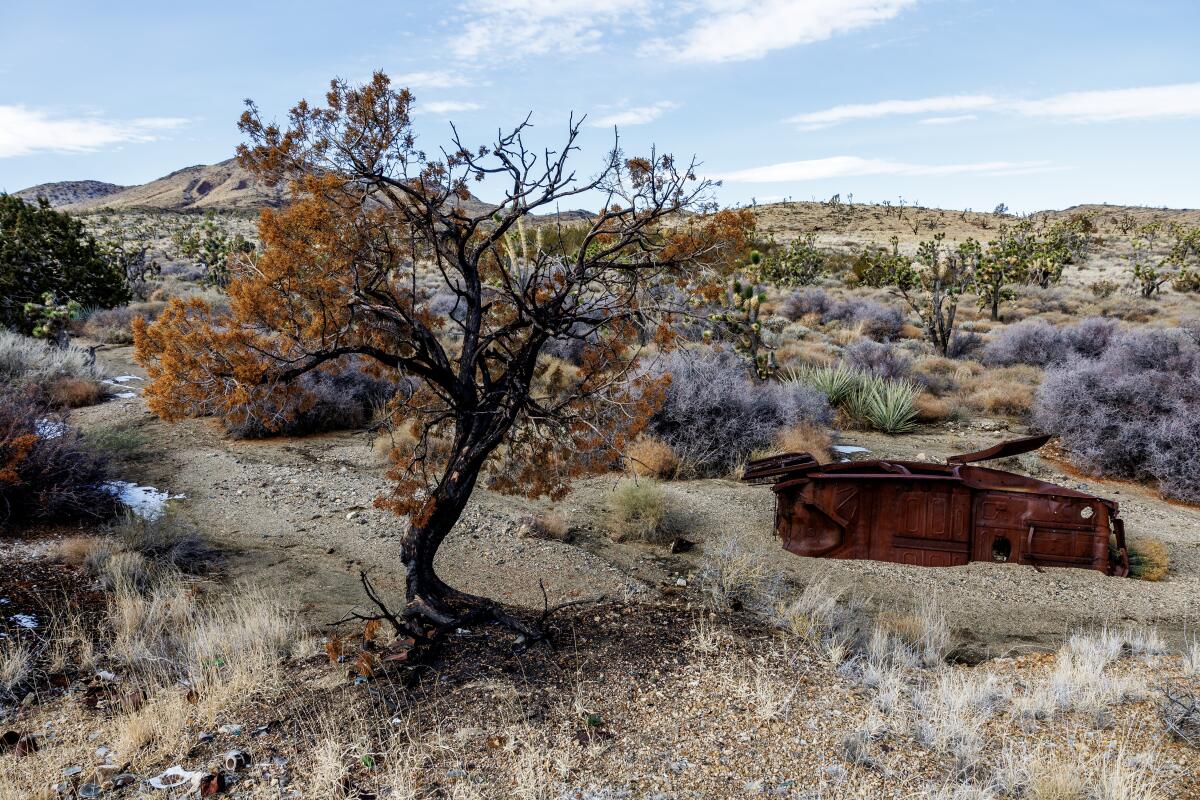
Lately I’ve been thinking a lot about Alex Wigglesworth’s story on wildfires and their effect on the Mojave Desert. The desert has seen an unusual amount of fire in the last few years, and with climate change bringing drought and erratic precipitation patterns, experts predict flames will become even more prevalent. But fire wasn’t always so rare here. Before the arrival of white settlers, the Mojave was covered in native grasses, and the region experienced fires on a regular basis. Check out the article for a deeper look at how researchers and land managers are trying to understand fire’s natural role in a desert landscape that has changed drastically — and continues to evolve with each passing year.
Happy adventuring,

P.S.
In the spring, wildflowers get all the attention, but this is a great time of year for clouds too. Rain showers and even rare coastal thunderstorms are creating all kinds of interesting shapes in the sky. As you’re going about your day, make sure to look up.
For more insider tips on Southern California’s beaches, trails and parks, check out past editions of The Wild. And to view this newsletter in your browser, click here.
Sign up for The Wild
We’ll help you find the best places to hike, bike and run, as well as the perfect silent spots for meditation and yoga.
You may occasionally receive promotional content from the Los Angeles Times.




